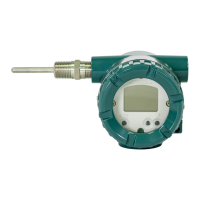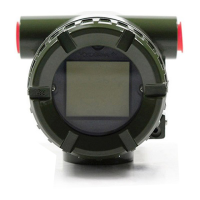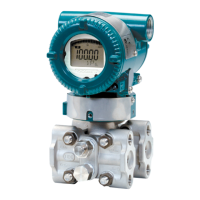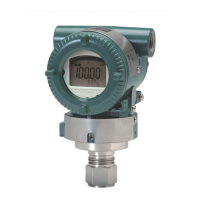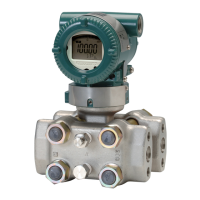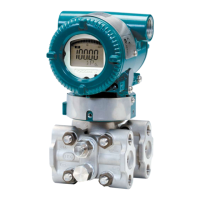IM 12B6C3-E-E
10-4 Appendix
10-3. Setup for sensor compatibility
10-3-1. General
The inputs of the EXA transmitter are freely programmable for ease of installation. Standard glass pH
electrodes, Ag/AgCl reference electrodes and Pt100 and Pt1000 temperature sensors need no special
programming. The EXA indicates a fault with a signal in the display field if there is a mismatch of sensors in
the connection.
10-3-2. Selection of measurement and reference electrode
The EXA PH202 is preprogrammed to accept industry standard glass electrodes and reference electrodes.
The unit initiates checks for asymmetry and slope during calibration. The on-line impedance checking
function has been upgraded in this most recent EXA release.
The EXA is universally compatible with all types of electrodes, such as enamel and antimony. In such
systems, however, the specific isothermal point of intersection (ITP), slope (pH/mV) and asymmetry potential
can be set for the type of electrode.
10-3-3. Selecting a temperature sensor
The EXA PH202 reaches its highest accuracy when used with the Pt1000 temperature sensor. This element
offers a 10-fold increase in resistance dependence over the Pt100 sensor. Choice of temperature sensor is
made in the Service Codes found in Chapter 5 of this manual.
• ITP
Most Yokogawa sensor systems use an Iso-thermal point (ITP) of pH7 and a zero point at pH7. This
is the default condition for which the transmitter is set. It is only necessary to consider this adjustment
when installing a system with a different ITP. Antimony systems and Pfaudler probes are good examples
of systems with different ITP values. Service code 23 is used. This also permits the setting of calibration
data for precalibrated sensors.
• Temperature sensor
The Pt 100 U RTD sensor is now becoming the most commonly used for temperature compensation.
The transmitter accepts inputs from several different temperature sensors to suit most sensor systems.
Service code 10-19 are used to set the temperature parameters and the process temperature
coefficient.
• Temperature calibration
For best accuracy, the temperature sensor should be calibrated to compensate for connection cable
errors. See Service code 12.
• pH Calibration
Traditionally, users select buffer solutions to suit the chosen output range. This is merely a continuation
of the days of analog instruments that used indicators driven by the mA output. With digital technology,
it is better to choose good buffer solutions and make an effective calibration than to use commercial
(adjusted) buffers which may have round number values, but are less effective buffers with lower buffer
capacity. It is for this reason that Yokogawa recommends that the NIST 4, 7 and 9 standard buffers
be used to calibrate solutions. The temperature responses of these are pre-programmed into Service
codes 24, 25, and 26 in the EXA PH202. Where other buffers are used with the semi-automatic
calibration function, their temperature response should be programmed into the relevant code.
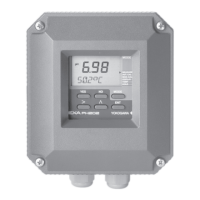
